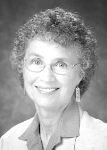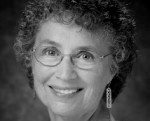By Janice Lindsay

I once read an article in which the writer tried to describe Alaska. When I read the first sentence, I choked on my tea.
The writer began, “With 3 million lakes, more than 3,000 rivers, and 17 of the country’s 20 tallest mountains, Alaska is vast, beautiful, wild – and largely empty.”
“Empty?” I coughed. “With all those lakes, rivers, and mountains, you call it empty?” (I tend to talk back, even to inanimate objects who will never relay the message.)
What the writer meant, of course, is that the state of Alaska, which covers more physical space than most countries, is largely empty of humans and their habitations.
Setting aside the question of whether that lack of humanity might, in fact, be a good thing, I am most struck by the human-centered pride and arrogance of calling the place “empty.”
It’s as if an eagle flew over Manhattan and wrote, “Except for about 850 wooded acres near its center, the island is largely empty.”
I’ve never been in the Alaskan wilderness, but I can pretty much guarantee that it is far from empty. It teems with life. That life is just as lively as human life except that it doesn’t write magazine articles completely discounting the existence of other species.
I know that Alaska teems with life because of my own back yard. Check your own neighborhood – well, maybe not right this minute. Wait until the snow melts. In winter, New England teems with life, but a lot of it – with the exception of a few foolish mammals including us, and some birds who don’t leave — has the good sense to be more or less asleep in lairs, dens, and tunnels, or buried in the earth.
But in the summer, look at all that life! Ants, beetles, spiders, worms, caterpillars, moths, butterflies, toads, frogs, snakes, grasses, wildflowers, berry bushes, growing trees, all those previously sleepy mammals, and back-from-the-south birds. Thousands of species, none of which would appreciate, if they could read English, being referred to as “nothing.” (Dictionary definition of empty: “containing nothing.”)
Science and travel writer Hannah Holmes spent a year intensely studying wildlife in her tiny urban yard, two-tenths of an acre including the house, in South Portland, Maine. She described her experience in a lively, moving book, “Suburban Safari: A Year on the Lawn.” She wrote, “I dug into the home turf – and found it every bit as weird as any other place I’ve been. All the creatures and plants we disregard on a daily basis proved to be utterly absorbing, once I observed the details of their behavior. (And make no mistake, plants behave. They also misbehave.”)
I have not knowingly witnessed plant misbehavior. But I’ve watched a crow family teach their baby (Fred) how to get along in this world. I’ve watched baby squirrels practice climbing high in a blue spruce when they were too young for ground travel. I’ve visited dozens of jack-in-the-pulpits in a tiny suburban patch of woods. I’ve watched monarch caterpillars enclose themselves in chrysalises and emerge as butterflies.
So don’t tell me that the Alaska wilderness is empty. Moose to mice to microbes, Alaska is my back yard multiplied by a zillion billion.
Cities and suburbs often contain bits of land that people call “vacant lots.” But they are far from empty. They are full of life. It’s just that this life doesn’t happen to live in buildings.
When we label a piece of land “vacant,” sooner or later some person feels compelled to put a building on it. Then the eagle, flying over, would say, “It used to be full of life. Now it’s empty.”
Contact jlindsay@tidewater.net








